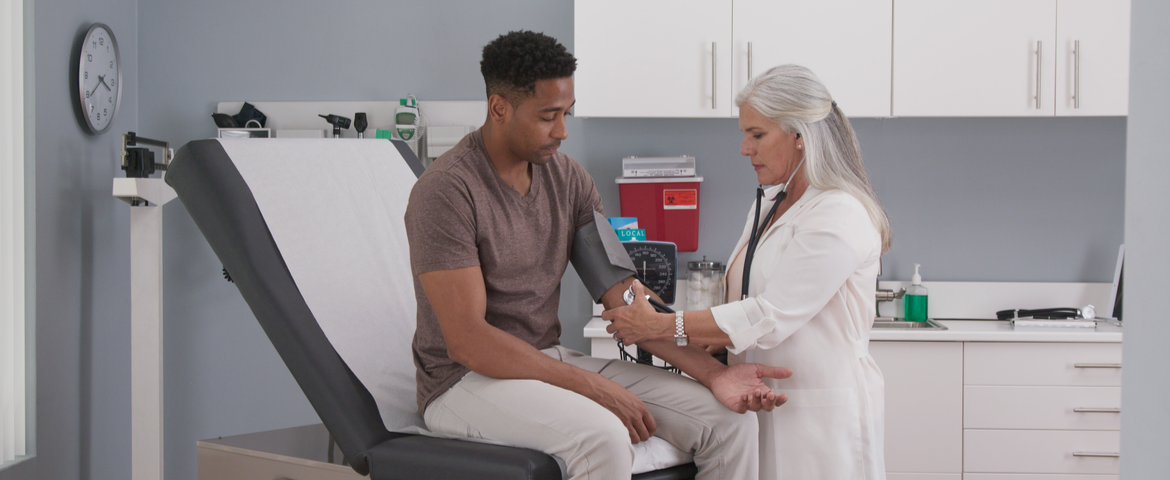VUE. This short, simple acronym can help you not only ensure you’re receiving the right care in the right place, but it can also help you keep costs down in the process. That’s because, depending on where you go to have—say, your sore throat—checked out, your costs will vary significantly. After all, the costs to keep an emergency room up and running is much higher than the overhead costs to operate an urgent care center. As a result, when you seek care in the ER, you can expect to pay considerably more—even for the same treatment you’d have received at urgent care or via a virtual visit.
Talk to your health plan to see what your plan covers and where so you can get a better understanding of the difference in costs, services and wait time between the many places you might receive care. At Priority Health, we ask members to VUE their care. Using this quick acronym, members can decide whether the care they need warrants virtual care (V), urgent care (U) or the emergency room (E) based on symptoms, urgency and whether or not their primary care provider is available.
The value of virtual care

The advent of the internet brought new ways to receive care that don’t require in-person visits. Medical professionals practice much of today’s care with a smart phone or tablet, through video or even by email. We call this virtual care, and it’s convenient for several reasons. First of all, it’s quick. There’s virtually no wait time for virtual care; you simply use your computer, phone or other device to chat, email or video conference a licensed medical professional who can make diagnosis and write prescriptions in a matter of minutes. Second, virtual care is extremely affordable. Lastly, virtual care is ideal if you’re in a rural or less populated area where urgent care centers aren’t available. The next time you experience any of the following symptoms, can’t see your doctor right away and know your condition isn’t an emergency, try virtual care. It’s a great option for:
- Allergies, bites and stings
- Sore throat, fever and headache
- Cold, cough and flu
- Diarrhea and heartburn
- Earache
- Pink eye, rashes and hives
In addition to virtual care, many health plans include similar coverage for convenient care, or care that you receive from medical professionals in retail spaces such as pharmacies and department stores.
Understanding urgent care
If you have a non-life-threatening condition that can’t wait for a doctor visit, you can go to an urgent care center to see a doctor. Urgent care visits can take up to a couple hours and are generally priced intermediately, depending on your health plan. There are roughly 500 urgent care centers across Michigan, so finding one near you shouldn’t be a problem unless you’re in a remote or rural part of the state. Each can see you for many common medical needs. They generally even perform their own X-ray and lab services. Go to an urgent care center if you’re experiencing symptoms such as:
- Minor broken bones and fractures in fingers or toes
- Sprains and strains
- Severe sore throat or cough
- Stomachache
- Urinary tract infections
- X-rays, labs and tests
Engaging the emergency room

The emergency room (or ER) should always be your last resort in receiving care. It’s designed to treat those who need immediate care and cannot wait for a doctor appointment, a virtual visit or a trip to an urgent care center. People who visit the ER are experiencing serious, hazardous, harmful and potentially fatal conditions such as:
- Bleeding that won’t stop
- Pain in the chest or one arm
- Poisoning or drug overdose
- Seizure or slurred speech
- Major broken bones
Your health insurer may contact you throughout your membership to explain or provide alternatives to visiting the ER. That’s because, unlike virtual, convenient or urgent care, the ER costs you a considerable amount of money. The services provided are more expensive, and you’ll ultimately pay more in copay, coinsurance and out-of-pocket costs. Make no mistake, if you or a loved one is experiencing an emergency that cannot wait, visit your in-network ER for services—it could mean the difference between life and death. And, if you can’t get to the ER, call 911 immediately.
Staying in-network and finding a doctor
No matter where you VUE your care, remember to make sure you receive care at an in-network facility. Out-of-network care can result in higher costs for you. Your health plan will detail your network facilities—some even include a helpful map. Ask your health insurer about your plan and your network, as well as where to receive care covered under your plan. Priority Health members can call the number on the back of their member ID card or log-in to send a secure message. It’s also important to have a doctor or primary care provider (PCP). Your insurer may have designated one to you when you became a member. If you’re not sure who your PCP is, contact your health plan to find out. Priority Health members can use the Find a Doctor tool in their MyHealth member account.
Remember, the next time you experience a symptom or condition, optimize your health and your budget and VUE your care.


